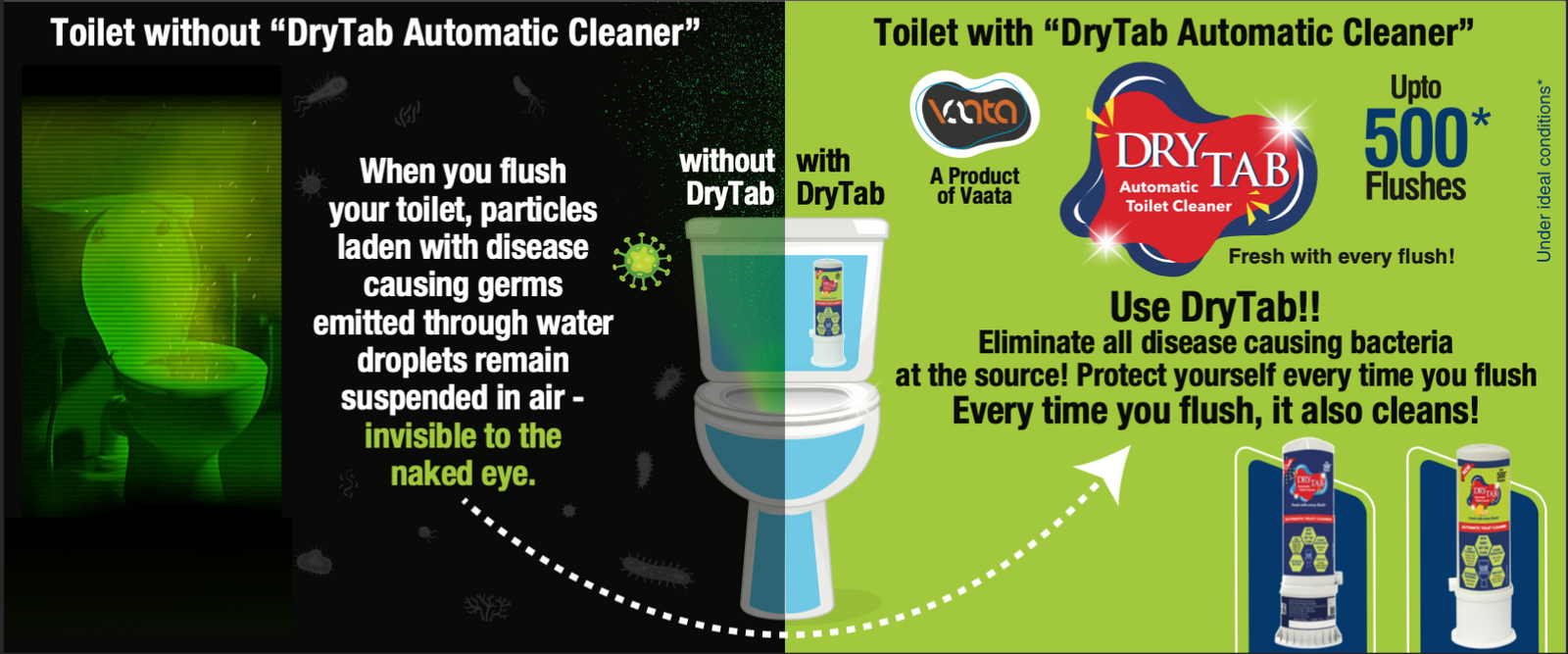The little known truth about Toilet Plumes.
We all use the toilet everyday, but very few of us would be aware of the possible ill effects this simple everyday act can cause. The truth is, that this simple act of flushing the toilet can cause tiny particles from inside the toilet bowl to spread all over the bathroom. They deposit themselves onto things in the toilet such as doorknobs, toothbrushes, hand towels, bath towels, and pretty much every object in the toilet. Scientists have named this phenomenon as "toilet plumes". Toilet Plumes are small particles that shoot up to 5 to 6 feet from your toilet in all directions when the toilet is flushed. The important thing to note here is that these particles contain a significant number of disease-causing germs and bacteria.

The plume particles takes only 6 seconds to shoot up and spread around your toilet.
Studies by MIT, National Centre for Biotechnology Information, University of Boulder

Click here to study about the research by University of Colorado Boulder

Click here to study about the research by Massachusetts Institute of Technology
Click here to study about the research by National Center for Biotechnology Information
When you flush your toilet, particles laden with disease causing germs emitted through water droplets remain suspended in air - invisible to the naked eye.
Source : Link
Understanding the paths and speeds of these particles, which can carry pathogens like E. coli, C. difficile, noroviruses, and adenoviruses, is important for reducing the risk of exposure through disinfection, ventilation, or better design of toilets and flushes. Even though the virus that causes COVID-19 (SARS-CoV-2) is found in human waste, there isn't enough proof yet that it spreads well through aerosols from the toilet.

Source : Link









